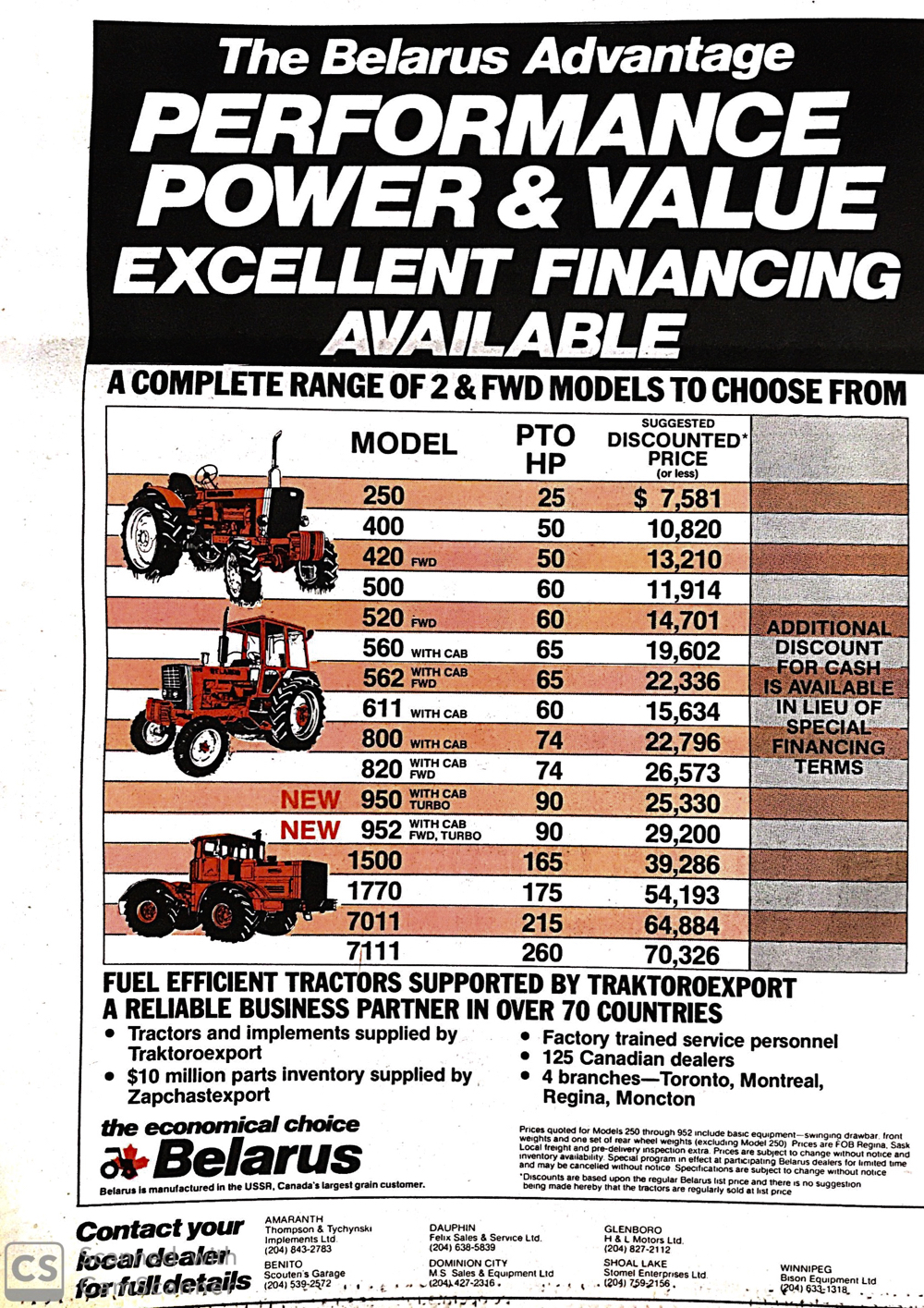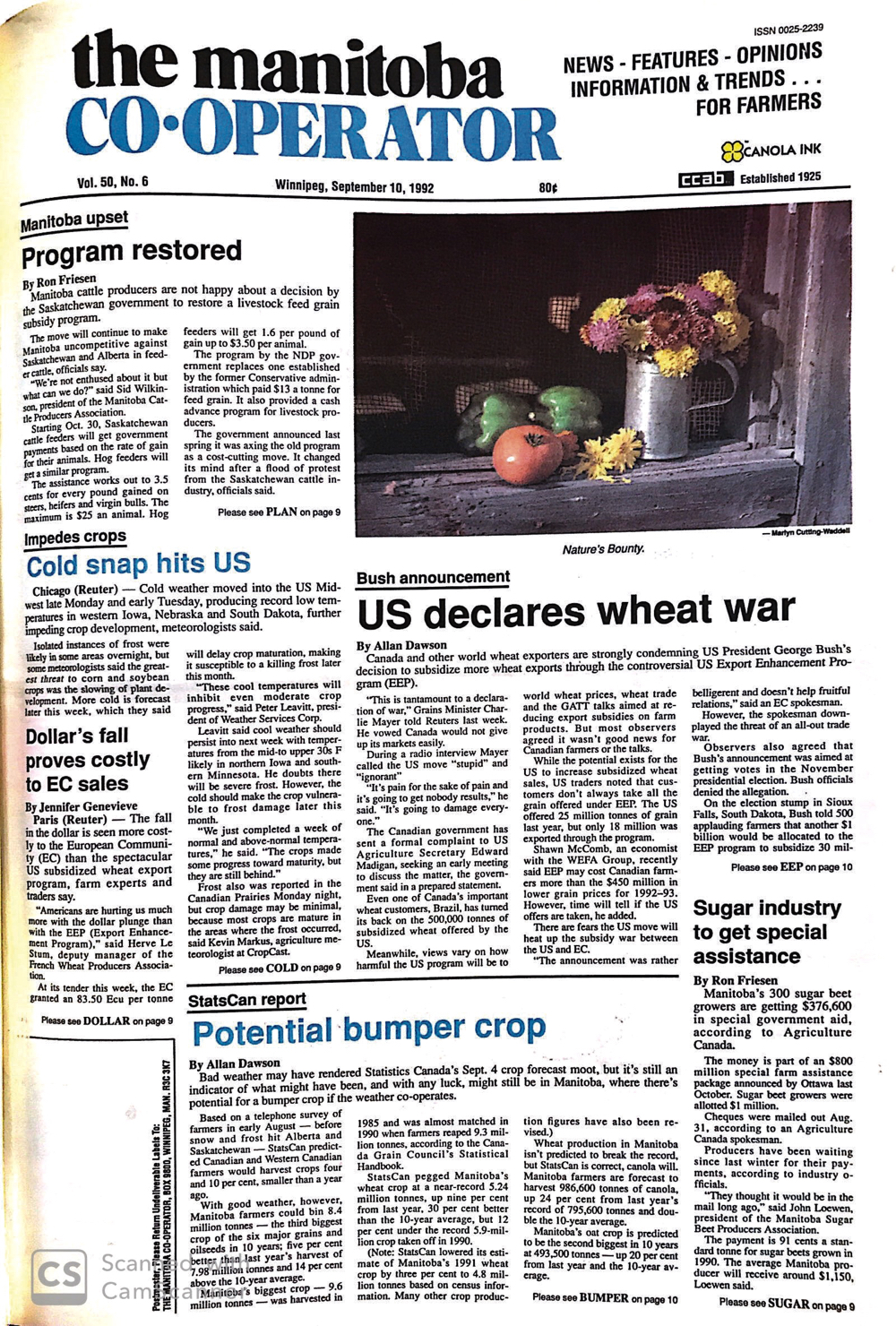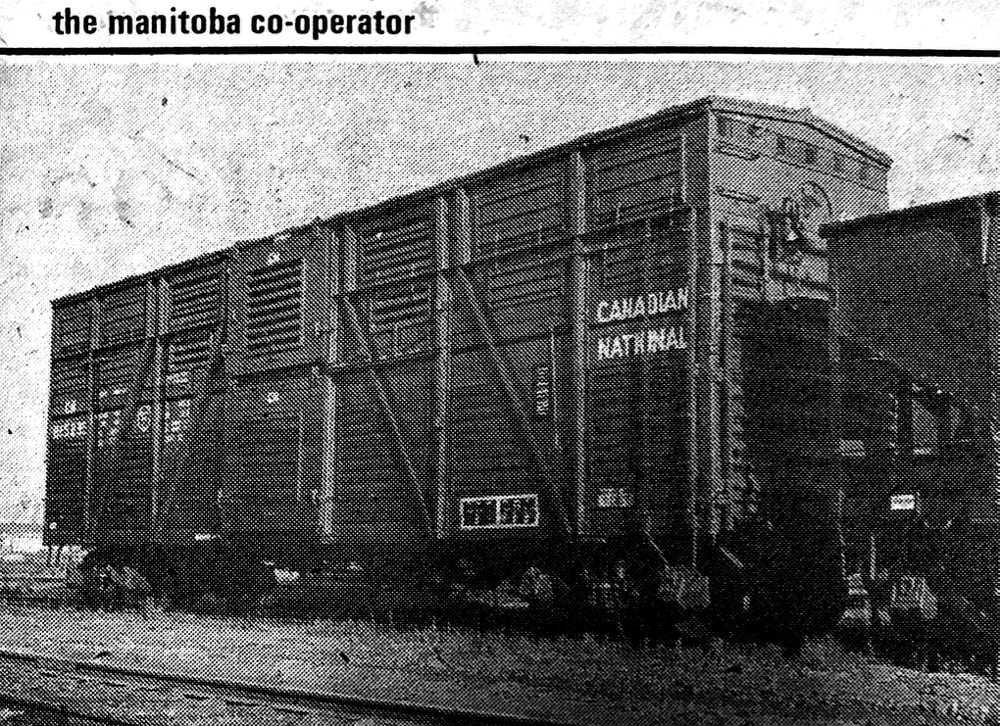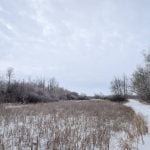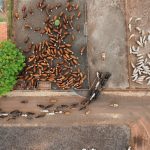This photo of an F.H. Brigden painting titled “Assiniboine Valley” appeared in our May 1944 issue. A story said, “Lads from the Prairies” could view reproductions in the barracks, messes, libraries, hospitals and reading rooms where they were stationed overseas. The idea was sponsored by the National Gallery and the Department of National Defence and the cost covered by Prairie wheat pools.
A report from the U.S. Department of Agriculture said the food outlook in Europe was “by no means favourable.” While production had been maintained at 85 to 90 per cent of normal other than in Russia, there were “grave shortages in many quarters.”
Read Also

Reaction rolls in on Health Canada dicamba restriction proposal
Spray expert says proposed dicamba rule change would ban ‘over the top’ use of the herbicide
Our June 1 issue said Agricultural Minister J.G. Gardiner told the House of Commons that attempts were being made to provide Britain with beef for the duration of the war. Commenting on criticism for not opening the U.S. market to Canadian cattle, Gardiner said more cattle had been bought for shipment to Britain than could have been shipped to the U.S. if its market were open.
Gardiner also announced a two-year agreement to supply bacon to Britain at a contract price of $22.50 per hundred pounds at seaboard, up 75 cents from the previous year.
The Canadian Wheat Board, which handled flax during the war, announced a price of $2.50 per bushel in store Fort William. Meanwhile, the board was issuing participation payments from the 1940 pools, and “going day and night, the accurate mechanical cheque writer clicks of payments to producers at the rate of 500 per hour.”



